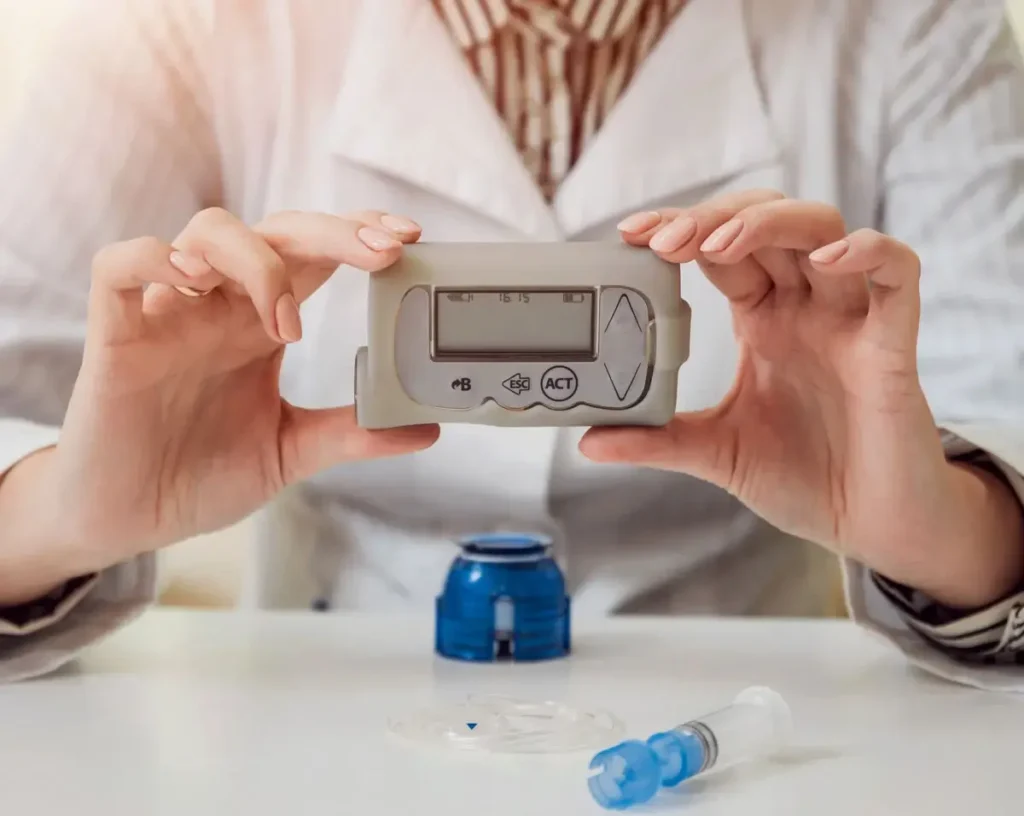Diabetes management has evolved significantly over the years, largely due to advancements in technology. The integration of sensors and insulin pumps has revolutionized how patients monitor and manage their blood sugar levels. This blog explores how these two critical components connect to enhance diabetes care, providing patients with greater control and flexibility in their daily lives.
Understanding Diabetes Management
Diabetes is a long-term illness that causes high blood sugar levels by altering the body’s metabolism of glucose. Effective diabetes management is crucial to prevent complications such as heart disease, nerve damage, and kidney issues. Traditional methods of monitoring blood sugar levels and administering insulin have been effective but often cumbersome. However, the advent of continuous glucose monitoring (CGM) sensors and insulin pumps has introduced a new era in diabetes care.
What Are Sensors?
Sensors, specifically continuous glucose monitors, are devices that provide real-time readings of blood sugar levels. These sensors are typically worn on the skin and measure glucose levels in interstitial fluid. The data collected is transmitted to a smartphone or insulin pump, allowing patients and healthcare providers to monitor glucose trends over time.
Benefits of Sensors in Diabetes Care
Real-time Monitoring:
Sensors provide continuous data, allowing for more timely and informed decisions regarding insulin administration and lifestyle adjustments.
Trend Analysis:
Patients can spot patterns and proactively alter their diet and exercise regimens by examining trends in their blood glucose levels.
Alerts and Notifications:
Many CGMs come equipped with alerts that notify users of high or low blood sugar levels, helping prevent emergencies.
What Are Insulin Pumps?
Insulin pumps are small, computerized devices that deliver insulin to the body in a controlled manner. These pumps can be programmed to administer basal rates (constant insulin delivery) and boluses (additional doses of insulin) based on food intake or activity levels. The integration of insulin pumps with CGMs has created a comprehensive approach to diabetes management.
More Read About Continuous Glucose Monitoring Can Change Patient Lives Forever
Advantages of Insulin Pumps
Precision in Insulin Delivery:
Insulin pumps allow for precise dosing, reducing the risk of both high and low blood sugar levels.
Flexibility in Lifestyle:
With an insulin pump, patients can enjoy more freedom in their eating and activity choices, as they can adjust their insulin delivery based on real-time data.
Ease of Use:
Insulin pumps are user-friendly, and many models offer mobile apps for easy tracking and adjustments.
The Connection Between Sensors and Insulin Pumps
The integration of sensors and insulin pumps represents a significant advancement in diabetes care. By working together, these devices offer a seamless and comprehensive approach to managing blood sugar levels.
Enhanced Communication Between Devices
Modern insulin pumps can communicate directly with CGMs, allowing for automatic insulin delivery adjustments based on real-time glucose readings. This integration reduces the need for manual input and allows for a more dynamic response to changing glucose levels.
Automated Insulin Delivery
One of the most significant benefits of connecting sensors with insulin pumps is automated insulin delivery. Some advanced systems can automatically adjust basal insulin rates based on CGM data, ensuring that patients receive the appropriate amount of insulin without constant monitoring. The connection between sensors and insulin pumps has transformed diabetes care
Improved Patient Empowerment
Patients take a more active role in their diabetes treatment when they have access to real-time data from both sensors and pumps. They can make informed decisions based on accurate information, leading to better outcomes. This empowerment fosters a sense of control and encourages patients to take an active role in their health.
Challenges in Integration
Despite the numerous benefits, there are challenges in integrating sensors and insulin pumps in diabetes care.
Technical Issues
Technical difficulties can arise with device connectivity and data sharing. Patients may experience issues with device compatibility, leading to frustration and potentially hindering effective diabetes management.
Data Overload
While real-time data is valuable, it can also be overwhelming for some patients. Managing the influx of information from both sensors and pumps requires a certain level of digital literacy, which may not be accessible to everyone.
Cost Considerations
The cost of continuous glucose monitors and insulin pumps can be a barrier for many patients. Insurance coverage varies, and not all plans fully cover these advanced devices, making them less accessible to those who would benefit most.
The Future of Diabetes Care
Diabetes care appears to have a bright future as long as technology keeps developing. Ongoing research and development aim to create even more sophisticated systems that integrate sensors and insulin pumps seamlessly.
Artificial Intelligence and Diabetes Management
The integration of artificial intelligence (AI) into diabetes management is a growing trend. AI algorithms can analyze data from sensors and insulin pumps to provide personalized recommendations for insulin dosing and lifestyle changes, further enhancing diabetes care.
Closed-loop Systems
The development of closed-loop systems, often referred to as “artificial pancreas” systems, is at the forefront of diabetes technology. These systems automatically adjust insulin delivery based on CGM data, effectively managing blood sugar levels without constant user intervention.
Conclusion
The connection between sensors and insulin pumps has transformed diabetes care, offering patients innovative tools to manage their condition effectively. By providing real-time monitoring, precise insulin delivery, and enhanced patient engagement, these technologies empower individuals to take control of their health. Despite challenges such as technical issues and costs, the future of diabetes management looks bright, with advancements in technology continuing to improve the lives of those living with diabetes. Embracing these innovations can lead to better outcomes and a more fulfilling life for patients navigating the complexities of diabetes.


